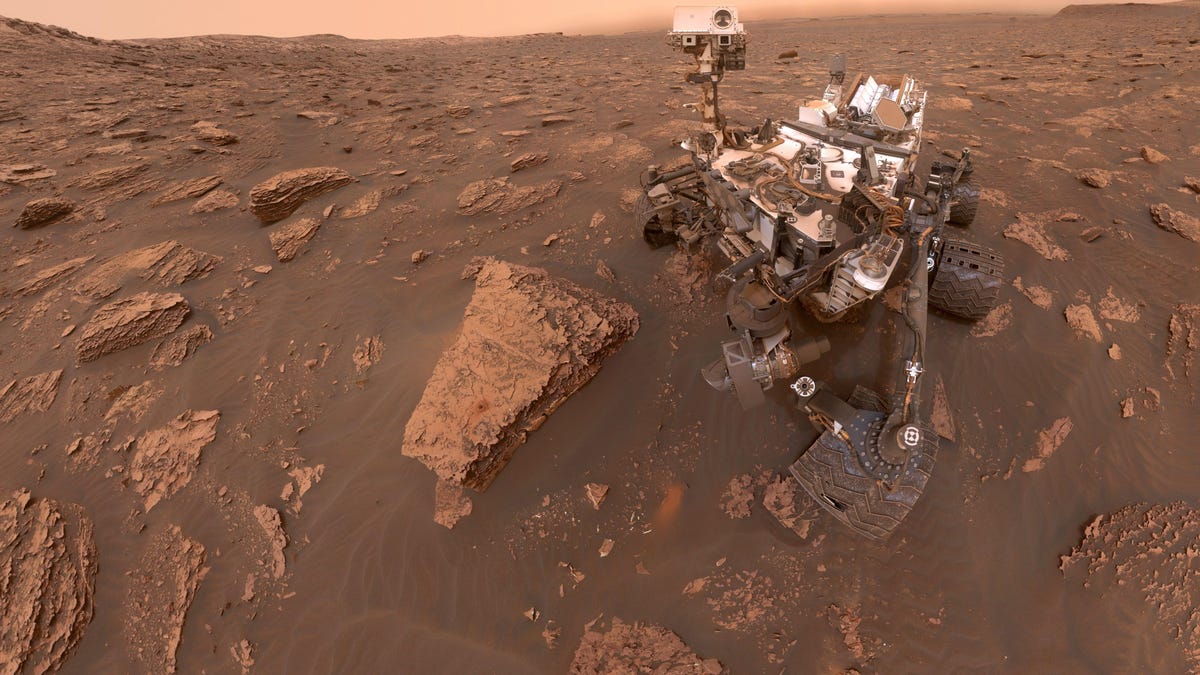Huge dust storm on Mars now covers the whole Red Planet
One rover on the planet's surface is down while another presents a unique opportunity for science.

Mars is now blurred when seen from above by a massive storm of fine dust particles turning day to night on much of the planet's surface. The storm was first spotted by NASA's Mars Reconnaissance Orbiter June 1. Within a week it was the size of North America and then quickly doubled in size and continued to grow.
"The Martian dust storm has grown in size and is now officially a "planet-encircling" (or "global") dust event," reads a release from NASA on Wednesday.
A similar monster storm covered almost the entire Martian surface in 2001 and again in 2007, but the planet has one key new addition since then: NASA's Curiosity rover.
The space agency's Opportunity rover is in a location that has been seriously affected by the storm. The fine dust kicked up into the Martian atmosphere is blotting out practically all sunlight, forcing the solar-powered robot to suspend all its science operations. The younger Curiosity rover, on the other hand, is nuclear-powered and able to keep on working. Light-blocking dust from the storm is the highest Curiosity has ever recorded, but the robot is still working in low light.
Two images taken by Curiosity of its current worksite. The left image was taken before the dust storm began, the right was captured June 17 showing dimming from dust in the atmosphere.
NASA scientists are hoping that Curiosity's vantage point on the ground will be able to help solve some of the mysteries of Martian dust storms, like why some remain small and short-lived while others last for months and grow almost incomprehensibly large.
"We don't have any good idea," says Scott D. Guzewich, a NASA atmospheric scientist leading Curiosity's dust storm investigation.
On Earth, a combination of factors including our thicker atmosphere, stronger gravity and plant cover keep dust storms from going global. And a Martian dust storm isn't nearly as terrifying as you might imagine due to the relatively light winds and very fine dust particles on the Red Planet. It's probably more like a breezy, dusty fog that won't go away.
Nonetheless, the notion of even a gentle dust storm that could blot out the sun for months at a time is a phenomenon best left for other planets to endure. Sorry, Curiosity.
Crowd Control: A crowdsourced science fiction novel written by CNET readers.
Solving for XX: The tech industry seeks to overcome outdated ideas about "women in tech."

